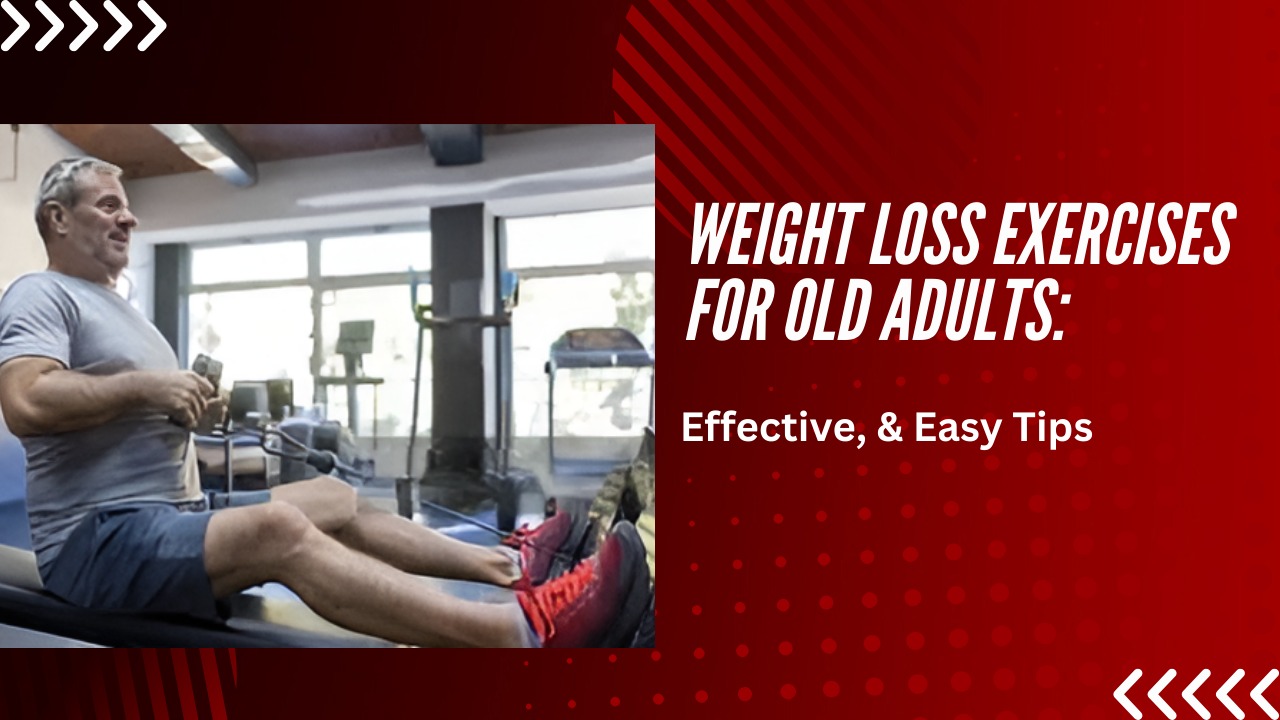As we age, maintaining a healthy weight becomes crucial for overall health and quality of life. Weight loss can be more challenging for older adults due to factors like slower metabolism, muscle loss, and hormonal changes. However, with the right approach, achieving and maintaining a healthy weight is possible and can improve both physical and mental well-being.
This article focuses on providing practical, safe, and effective Weight Loss Exercises for Older Adults. These exercises are designed to meet the specific needs and physical conditions of older individuals, helping them shed pounds, maintain their weight, or simply enhance overall health.
Including a combination of exercise, a balanced diet, and consistent habits is key to success. By starting with the right exercises and staying committed, older adults can boost their health, mobility, and confidence while on their weight loss journey.
Why Weight Loss Matters for Older Adults
Before diving into specific exercises, it’s important to understand why weight loss is crucial for older adults:

Carrying excess weight, especially around the belly, significantly raises the risk of heart disease, stroke, and high blood pressure. By losing weight, particularly through Weight Loss Exercises for Older Adults, the heart works more efficiently, reducing strain and the likelihood of developing cardiovascular issues. A healthier weight lowers blood pressure and cholesterol, leading to improved overall heart health.
Better Mobility and Joint Health: Extra weight places added pressure on the joints, which can result in arthritis and other mobility challenges. The knees, hips, and lower back are especially vulnerable. Weight Loss Exercises for Older Adults help reduce strain on these areas, alleviating pain, improving flexibility, and enhancing overall mobility. Losing weight can also delay or prevent the progression of joint-related conditions, leading to a better quality of life and increased independence.
Prevention of Chronic Conditions: Obesity and excess weight increase the chances of developing chronic conditions like type 2 diabetes, high cholesterol, and some cancers. Engaging in Weight Loss Exercises for Older Adults can help prevent these conditions by improving insulin sensitivity, lowering cholesterol, and reducing inflammation in the body. Regular exercise and weight loss help maintain overall health, lowering the risk of serious diseases and promoting longevity.
Mental and Emotional Well-being: Weight loss isn’t just about physical health; it also plays a significant role in mental and emotional well-being. Shedding excess weight can boost self-esteem and confidence, improve mood, and enhance mental clarity. Weight Loss Exercises for Older Adults not only support physical health but also contribute to emotional resilience, reducing stress and improving overall happiness.
Key Considerations for Older Adults When Exercising
Before starting any weight loss exercise program, older adults should consider the following:
Consult with a Healthcare Professional: Before starting any new fitness program, particularly Weight Loss Exercises for Older Adults, it’s crucial to speak with your doctor, especially if you have any chronic health conditions, such as heart problems or diabetes. A healthcare professional can help assess your current health status and recommend exercises that are safe and suitable for your specific needs. This ensures you approach weight loss in a way that is both effective and safe.

Start Slowly: If you’ve been inactive for a while, it’s important to ease into exercise to avoid injury. Begin with low-impact Weight Loss Exercises for Older Adults such as walking, gentle stretches, or water aerobics. These activities help build endurance without putting too much strain on your body. Over time, you can gradually increase the intensity and duration of your workouts to improve strength and stamina.
Focus on Safety: Safety should always be a top priority when performing Weight Loss Exercises for Older Adults. Make sure to use proper form during each exercise to prevent strain or injury. It’s also important to listen to your body and stop if you feel discomfort. Take regular breaks to avoid overexertion, and consider working with a trainer or using instructional videos to ensure correct technique.
Hydrate and Rest: Staying hydrated and getting adequate rest are essential components of any exercise routine. Proper hydration helps maintain energy levels and supports muscle recovery, while rest allows your body to repair itself after exercise. These practices are especially important when starting new Weight Loss Exercises for Older Adults to ensure you recover properly and avoid burnout or injury.
With these precautions in mind, let’s look at some of the best weight loss exercises for older adults.
Best Weight Loss Exercises for Older Adults
The following exercises are specifically chosen for older adults as they are low-impact, easy to do, and highly effective for burning calories and building strength.
A. Walking
Walking is one of the most accessible and effective Weight Loss Exercises for Older Adults. It’s a low-impact activity that doesn’t require special equipment or a gym, making it easy to incorporate into daily life. Whether it’s a stroll around the neighborhood, a walk in the park, or even around your home, walking helps burn calories and improve overall health.
For older adults, walking is a great choice as it’s gentle on the joints while still providing numerous benefits, such as improved heart health, better mobility, and increased endurance. By making walking a regular part of your routine, you can effectively support weight loss goals while enhancing physical and mental well-being.
Benefits:
Improves cardiovascular health
Burns calories and helps with fat loss
Enhances mobility and joint health
Improves mood and mental clarity
How to Do It:
Start with a 10–15-minute walk at a comfortable pace. Gradually increase the duration and intensity as your endurance builds.
Walk briskly for 30–60 minutes, 3–5 times a week.
Include intervals by alternating between slower and faster walking.
Tip: Use supportive shoes to avoid joint strain, and try to walk on soft surfaces like grass or a track to minimize impact.
B. Swimming
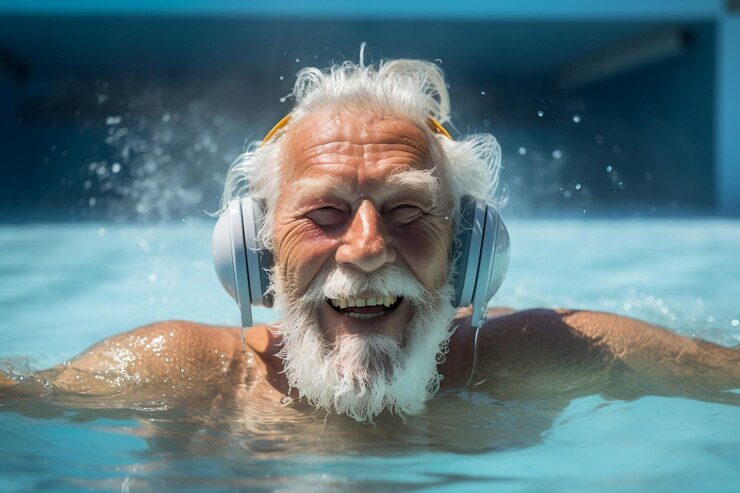
Swimming is an excellent choice among Weight Loss Exercises for Older Adults due to its low-impact nature. The buoyancy of the water helps support the body, reducing strain on the joints and minimizing the risk of injury. This makes swimming a safe and effective workout option for those with joint issues or limited mobility.
In addition to being gentle on the body, swimming provides a full-body workout. It engages multiple muscle groups, promoting strength, flexibility, and endurance. Whether you’re swimming laps or enjoying a gentle water aerobics class, this exercise is a great way to burn calories, improve cardiovascular health, and support weight loss, all while being easy on the joints.
Benefits:
Burns calories while being easy on the joints
Improves cardiovascular health
Strengthens muscles and tones the body
Enhances flexibility and joint mobility
How to Do It:
Start with gentle swimming laps, alternating between different strokes such as freestyle, breaststroke, and backstroke.
Swim for 20–30 minutes, 3–4 times a week, gradually increasing the time and intensity as your stamina improves.
Tip: If swimming in a pool isn’t accessible, water aerobics or simply walking in the shallow end can be an effective alternative.
C. Chair Exercises
Chair exercises are ideal Weight Loss Exercises for Older Adults who have limited mobility or balance concerns. These exercises can be done while seated, making them a great option for those who find standing or moving challenging. They are designed to improve strength, flexibility, and endurance without the need to stand up.
By engaging in chair exercises, older adults can still benefit from physical activity that promotes weight loss and enhances overall well-being. These exercises help increase circulation, build muscle strength, and improve joint flexibility, all while reducing the risk of falls. Incorporating chair exercises into your daily routine can make a significant difference in your fitness and help you achieve your weight loss goals safely and effectively.
Benefits:
Great for improving muscle strength and flexibility
Ideal for people with limited mobility
Low-impact and easy to perform
How to Do It:
Seated Leg Lifts: Sit upright in a chair and extend one leg at a time, holding for a few seconds before lowering it. Repeat 10–15 reps per leg.
Seated Marching: While seated, lift one knee toward your chest, then lower it and raise the other knee. Continue alternating for 1–2 minutes.
Arm Raises: Hold light weights (or household objects like water bottles) in each hand. Slowly raise both arms to shoulder height and then lower them back down. Repeat 10–15 times.
Tip: Perform chair exercises daily or 3–4 times a week, depending on your physical condition.
D. Strength Training (Resistance Training)
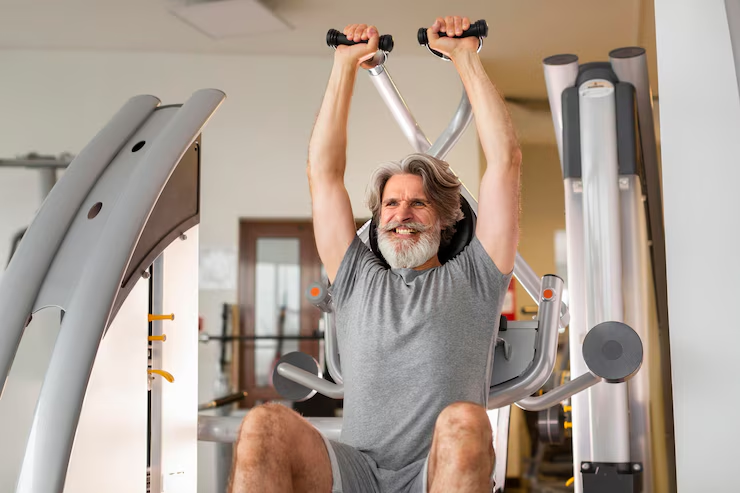
Strength training is an essential part of Weight Loss Exercises for Older Adults. As we age, muscle mass naturally decreases, which can slow metabolism and contribute to weight gain. Incorporating strength training into your routine helps preserve muscle mass, increase metabolism, and promote fat loss, making it a vital component of any weight loss plan.
Building lean muscle through strength training not only helps with weight loss but also boosts overall body strength and endurance. The more muscle you have, the more calories your body burns, even when you’re resting. This makes strength training a highly effective way for older adults to support their weight loss goals while improving their overall fitness and health.
Benefits:
Prevents muscle loss due to aging (sarcopenia)
Boosts metabolism
Improves bone density and reduces the risk of osteoporosis
Increases overall strength and functional independence
How to Do It:
Start with bodyweight exercises like squats, wall push-ups, and lunges.
Gradually add resistance using light dumbbells, resistance bands, or even household items like soup cans or water bottles.
Perform strength training exercises 2–3 times per week, allowing at least one day of rest in between sessions.
Tip: Focus on compound movements that work multiple muscle groups, such as squats, lunges, or seated rows.
E. Cycling
Cycling is an excellent low-impact option among Weight Loss Exercises for Older Adults. Whether you choose to use a stationary bike at home or cycle outdoors, it’s a fun and effective way to burn calories without putting stress on your joints. Cycling allows for a great cardiovascular workout, which supports overall fitness.
In addition to calorie burning, cycling strengthens the legs and improves muscle endurance. For older adults, cycling is a safe way to engage in exercise that builds strength and enhances mobility. Regular cycling can help improve balance, leg strength, and cardiovascular health, all while contributing to weight loss in a joint-friendly manner.
Benefits:
Burns calories and promotes fat loss
Low-impact on joints and knees
Improves cardiovascular health and leg strength
How to Do It:
If cycling outdoors, start with shorter rides at a comfortable pace, gradually increasing distance and intensity.
For stationary cycling, aim for 20–30 minutes of moderate-intensity cycling, 3–4 times per week.
Tip: Ensure your bike is properly adjusted to your height to avoid strain on your knees and back.
F. Yoga and Pilates
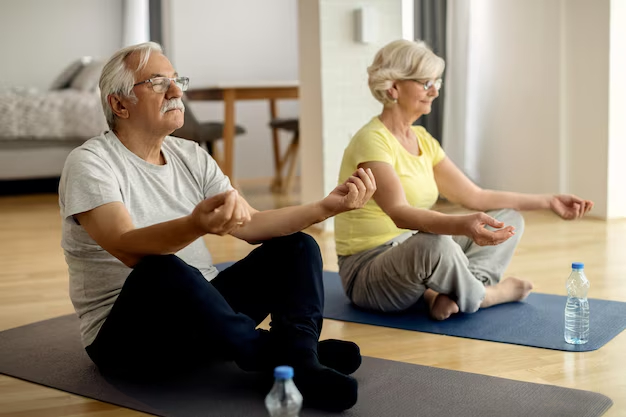
Yoga and Pilates are both effective Weight Loss Exercises for Older Adults, offering benefits beyond just weight loss. These exercises help improve flexibility, balance, and core strength, which are important for maintaining mobility and preventing falls as we age. The gentle movements in both yoga and Pilates make them accessible for older adults, even those with limited mobility.
In addition to physical benefits, yoga and Pilates can help reduce stress, a common factor in overeating or emotional eating. By promoting relaxation and mindfulness, these exercises can help control stress levels and support healthier eating habits. Incorporating yoga or Pilates into your routine can contribute to weight loss, while also improving overall health and well-being.
Benefits:
Improves flexibility and mobility
Builds strength, particularly in the core and lower body
Reduces stress and promotes relaxation
Low-impact and gentle on the joints
How to Do It:
Attend beginner yoga or Pilates classes, or use online videos designed for older adults.
Focus on poses and movements that strengthen the core, improve posture, and promote flexibility, such as gentle backbends, seated twists, and modified planks.
Tip: Start with gentle sessions and increase the duration and intensity over time. Many studios offer classes specifically for older adults.
G. Tai Chi
Tai Chi is an ancient Chinese practice known for its slow, controlled movements that improve balance, strength, and flexibility. It is ideal for older adults due to its low-impact nature.
Benefits:
Enhances balance and coordination
Reduces the risk of falls
Improves flexibility and muscle tone
Reduces stress and promotes mental clarity
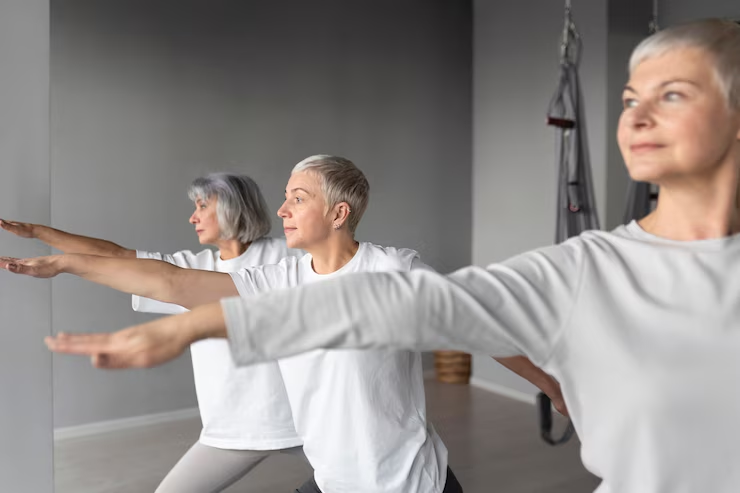
How to Do It:
Start with a beginner Tai Chi class or use online resources to learn the basic forms and movements.
Practice Tai Chi for 20–30 minutes, 3–4 times a week.
Tip: Tai Chi is especially beneficial for those at risk of falls, as it enhances balance and coordination.
Combining Exercises for Maximum Weight Loss
For optimal results, it’s important to incorporate a variety of exercises that target different aspects of fitness:
Aerobic Exercises: Walking, cycling, swimming, or dancing can help improve cardiovascular health and burn calories.
Strength Training: Include bodyweight exercises or resistance training to preserve muscle mass and increase metabolism.
Flexibility and Balance: Include yoga, Pilates, or Tai Chi to improve flexibility, reduce stress, and enhance overall mobility.
A balanced routine that includes these various exercise types will ensure you stay strong, mobile, and on track with your weight loss goals.
Tips for Staying Motivated
Set Small, Achievable Goals: Start by setting small, realistic milestones for yourself. These goals can be simple, like walking for 15 minutes a day or completing a few strength exercises each week. Celebrating each success, no matter how small, can keep you motivated and help build momentum. By focusing on achievable goals, you’ll feel a sense of accomplishment and be more encouraged to continue on your weight loss journey.
Track Your Progress: Keeping a journal is a great way to track your workouts and monitor any changes in how you feel, both physically and mentally. Record details like the number of steps taken, calories burned, or how you’re feeling after each exercise. Tracking your progress not only helps you stay on course but also allows you to notice improvements over time, making it easier to stay motivated and committed.
Make It Social: Finding a workout buddy or joining a fitness group can make exercising more enjoyable and give you the extra push to stay consistent. Having someone to share your goals with can help keep you accountable and provide motivation on days when you’re feeling less inclined to work out. Plus, working out with others can bring a sense of community and encouragement.
Mix It Up: Keep your routine fresh and exciting by varying your exercises. This not only helps prevent boredom but also targets different muscle groups, enhancing your overall fitness. Whether you’re adding new activities like swimming or cycling, or simply changing the intensity of your workouts, variety will challenge your body in new ways and help you stay engaged.
Conclusion
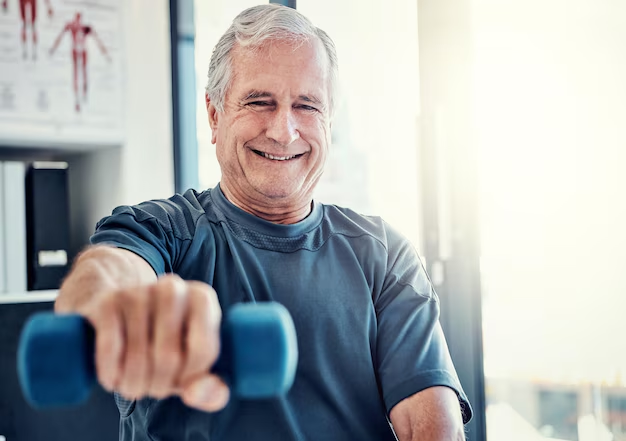
Weight Loss Exercises for Older Adults should prioritize safety, effectiveness, and enjoyment. A well-rounded fitness routine that includes aerobic exercise, strength training, flexibility work, and balance exercises is essential for achieving sustainable weight loss and improving overall health. These exercises help enhance cardiovascular health, muscle strength, and joint flexibility, all of which are crucial as we age.
Before starting any new fitness routine, it’s important to consult with a healthcare provider, especially if you have pre-existing health conditions. Starting slow and gradually increasing the intensity of your exercises as your body becomes stronger will help reduce the risk of injury and ensure long-term success.
With consistent effort and the right approach, Weight Loss Exercises for Older Adults can lead to significant improvements in health and quality of life. Embrace a balanced, enjoyable fitness routine and experience the many benefits of a healthy weight and an active lifestyle.
FAQs
Q.1 What are the best weight loss exercises for older adults ?
The best exercises include walking, swimming, cycling, strength training, yoga, and Tai Chi. These activities are low-impact and improve both strength and cardiovascular health.
Q.2 How often should older adults exercise for weight loss ?
Older adults should aim for at least 150 minutes of moderate-intensity aerobic exercise per week, combined with strength training 2-3 times per week.
Q.3 Can strength training help with weight loss in older adults ?
Yes, strength training is crucial for maintaining muscle mass, boosting metabolism, and promoting fat loss. It should be incorporated 2-3 times a week.
Q.4 Are there any exercises that are safe for those with joint issues ?
Yes, exercises like swimming, walking, chair exercises, and cycling are gentle on the joints, making them safe for those with arthritis or other joint issues.
Q.5 How can I stay motivated to exercise as I age ?
Set small, achievable goals, track progress, and find social support through classes or workout partners to stay motivated. Mixing up exercises can also keep things interesting.
